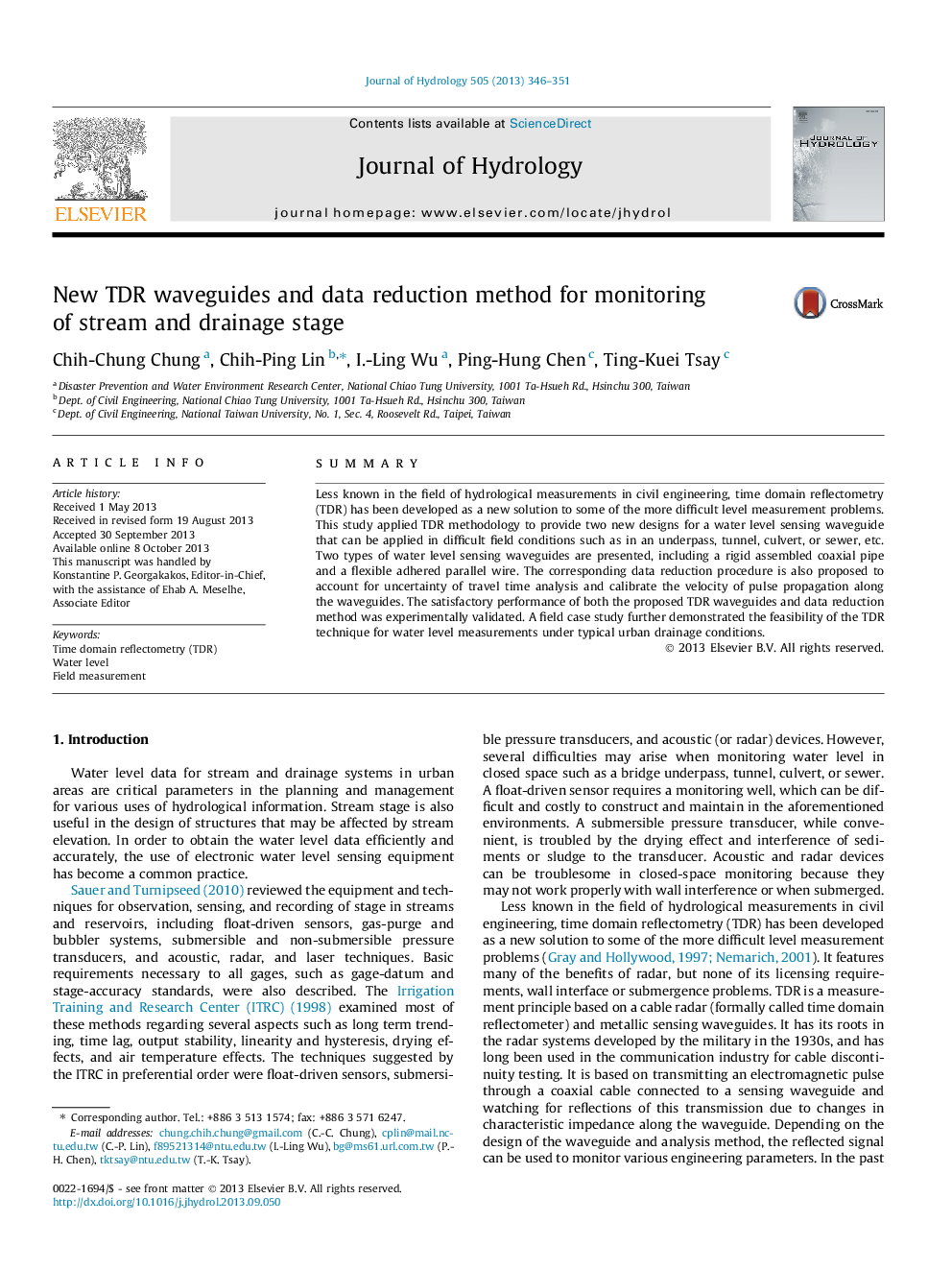| Article ID | Journal | Published Year | Pages | File Type |
|---|---|---|---|---|
| 4576173 | Journal of Hydrology | 2013 | 6 Pages |
•We applied the TDR method to provide new probe designs for water level sensing.•Two types of TDR waveguides were developed for difficult field environments.•The data reduction was proposed to reduce uncertainty and assist in field calibration.•The performance of TDR waveguides and data reduction was experimentally validated.•A field case study demonstrated the feasibility of the TDR technique.
SummaryLess known in the field of hydrological measurements in civil engineering, time domain reflectometry (TDR) has been developed as a new solution to some of the more difficult level measurement problems. This study applied TDR methodology to provide two new designs for a water level sensing waveguide that can be applied in difficult field conditions such as in an underpass, tunnel, culvert, or sewer, etc. Two types of water level sensing waveguides are presented, including a rigid assembled coaxial pipe and a flexible adhered parallel wire. The corresponding data reduction procedure is also proposed to account for uncertainty of travel time analysis and calibrate the velocity of pulse propagation along the waveguides. The satisfactory performance of both the proposed TDR waveguides and data reduction method was experimentally validated. A field case study further demonstrated the feasibility of the TDR technique for water level measurements under typical urban drainage conditions.
